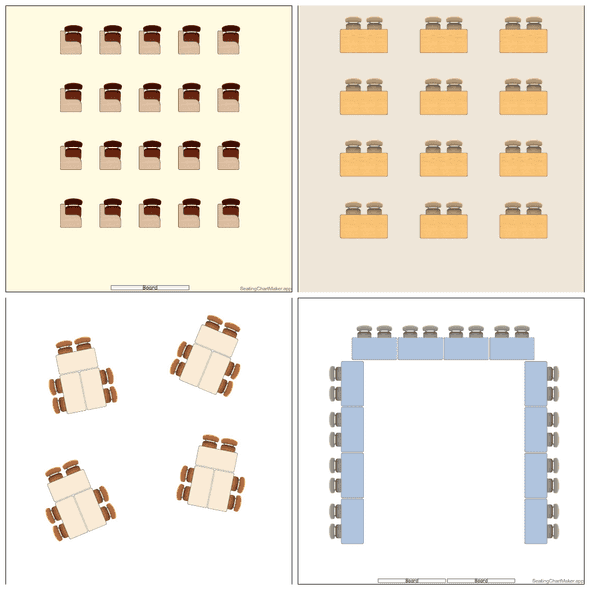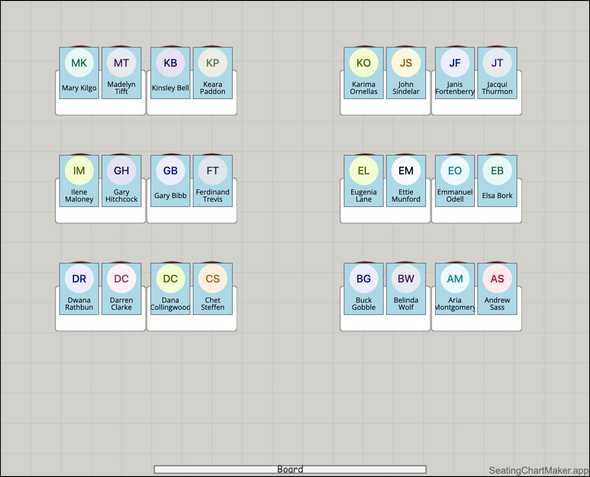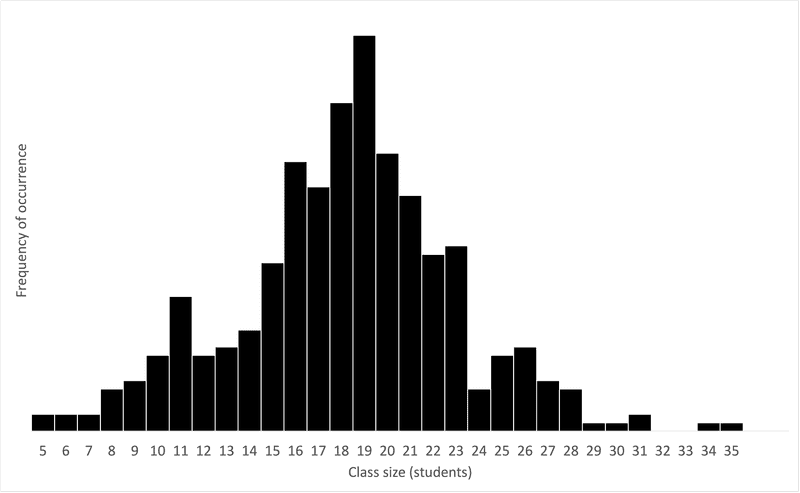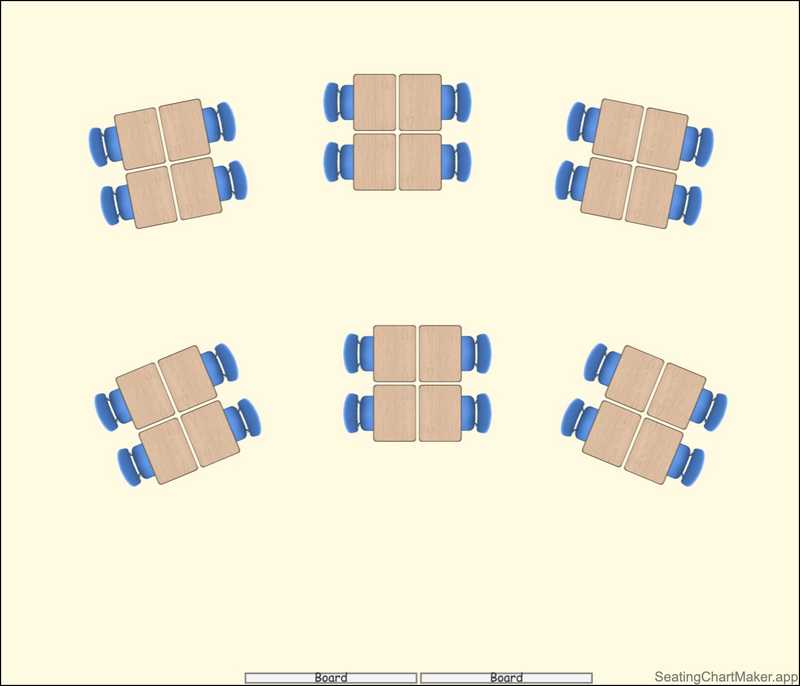Seating Charts: The Ultimate Classroom Management Hack

You spent so much time perfecting the day’s lesson plan, but as you look around the room, you notice that chaos has suddenly ensued. Instead of working nicely on their group projects as planned, your students have gotten noticeably loud and wildly off-topic as you were helping another student.
Before you can even say a word, one of them stands up and starts running around the classroom, holding another student’s personal item above their head and taunting them with it. You jump into action, but the classroom door opens, and an administrator walks in—just in time to witness your humiliation.
As a teacher, you know students always misbehave at the worst possible moments.
Whether they ruin a great activity you worked so hard to plan, are in the middle of a standardized test in a silent classroom, or wait until the second your boss just happens to walk by, classroom management can be one of the biggest hurdles throughout your career.
That’s why you’re always looking for those helpful tips and tricks shared by veteran teachers to get your classroom under control once and for all.
Fortunately, you don’t need to hear the latest and greatest ideas every school year. In fact, having the right seating chart is one of the best classroom management hacks you’ll ever need. While often overlooked, a good classroom seating chart works wonders for student behavior, and there are many ways to create one based on your students’ needs.
One of the first considerations you need to make before creating a classroom seating chart is how to arrange student desks around the room. Some of your options include:
(Click on the links to see related classroom seating chart templates.)
But, of course, the size and shape of your room will affect student desk arrangements as well as your personal preferences.
And once you know where your desks will be located, it’s time to create a classroom seating chart that will encourage student success. You can create your own seating chart with a purpose-built software. The way you do your seating plans will be just as unique as the students who enter your classroom every year.
Here are just some of the possibilities:
1. Alphabetical Seating Charts
There are many pros to creating an alphabetical seating chart. It makes it easy for teachers to locate and identify students quickly, particularly at the beginning of the year when you’re still learning their names. They also work well when a substitute teacher, parent volunteer, or classroom assistant visits your room on an infrequent basis and doesn’t know all of the students by name. Lastly, younger elementary students often do well with an alphabetical seating chart too because they enjoy having a special assigned seat with a fun name tag there to help them find it.
The downsides to having an alphabetical seating chart are that the same students may end up working together year after year and students who do not get along with one another may be stuck in close proximity together based on their names alone.
2. Diverse Seating Charts
Another option that comes with many advantages is intentionally creating a seating chart based on maximizing the diversity within your classroom. By taking things such as gender, age, ethnicity, religious beliefs, and socioeconomic background into account, you can choose to locate students by others in class who have unique perspectives from their own. Having a diverse classroom means that your students will learn more from each other and develop cultural sensitivity.
The only downside to this type of seating chart is that it can be very difficult to create when you’re teaching in school districts with a more uniform population of students.
3. Mixed Ability Level Seating Charts
Mixed ability level seating charts are a great way to help all students excel through peer collaboration. Put all of the data you’ve been collecting this year to good use, and create a seating chart based on things like your student’s current reading or math levels, standards they still need to master, or any other metric of proficiency you’ve been using in class.
The only downside to ability-level seating charts occurs when students of similar abilities are always grouped together. This leaves your struggling students on their own during group projects with no one to help them besides you. However, remember that the equitable way to design an ability-level seating chart is to mix advanced learners with students just below them. The advanced learners will then be able to assist the other students so they can master the material, too. Plus, teaching new material to others helps advanced learners create understanding on a deeper level.
4. Student Choice Seating Charts
While allowing students to choose their own seats in class may seem overwhelming at first, there are many benefits to giving your students choice within the classroom. Student choice gives them a sense of autonomy and encourages them to be responsible. Plus, it teaches students of any age to use their freedom wisely and within limits so that it won’t ultimately be taken away.
Of course, there are situations that do not lend themselves to student choice seating charts. So, it’s best to leave this option until after student-teacher rapport has been established and classroom expectations have been put into place for some time.
Seating Chart Maker
Now that you’re familiar with some of the different ways to organize your student desks based on both the size and shape of your classroom and your personal preference, as well as a few options for creating a classroom seating chart designed specifically for student success, the only question that remains is how you’re going to create the perfect seating assignment now that you’re ready.
You may be one of those teachers with a true love for pen and paper, so you break out your materials and start drawing your classroom as it is, filling in student names as you go. Or, you may be one of those creative types, so you design a visually-appealing poster board representation with different colored markers to make it really pop. Lastly, you may be a high-tech teacher and prefer to use an app like Seating Chart Maker to create your classroom seating chart with the help of online tools.
The best part of using an app, over the other two options, is that you can save all of your seating charts in one place and change them throughout the year quickly and easily. Or, you can even return to a previous seating chart you liked at any time just by printing it off.
No matter which option you choose though, it is a good idea to refresh your classroom seating chart throughout the year. Many teachers like to change their assigned seats as often as every marking period.
Of course, you can always change things up a bit at any time if needed. If your current seating chart just isn’t working, feel free to move a few students around or your entire class. Not only does this address behavior issues, but it also gives students a chance to interact with different peers throughout the year.
Just be sure to keep a current classroom seating chart handy at all times. This makes it easy for anyone to step into your class, whether it be an administrator giving a presentation, a substitute teacher covering your class, a parent volunteer helping out, or a classroom assistant lending you a hand. Plus, it can really help special education teachers or therapists when they provide push-in services in your classroom.
So, when you’re ready to put all of those student behavior headaches behind you and perfect your classroom management skills, start creating a classroom seating chart designed for student success. And consider using the Seating Chart Maker app to make it easier than ever before.








